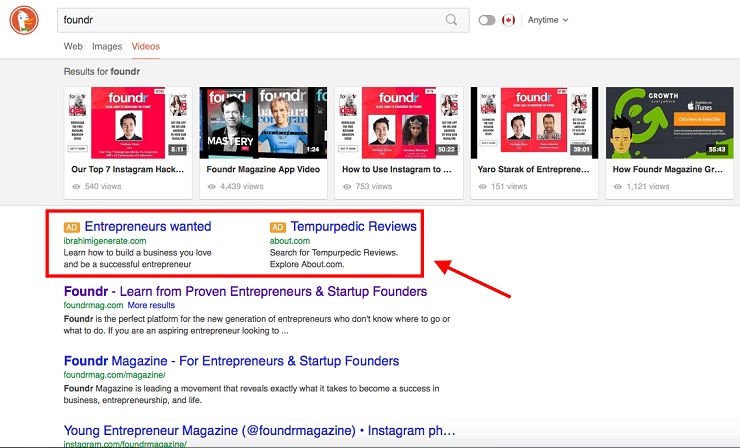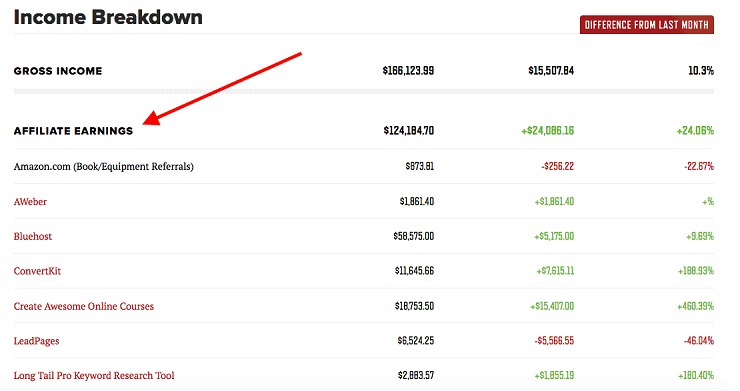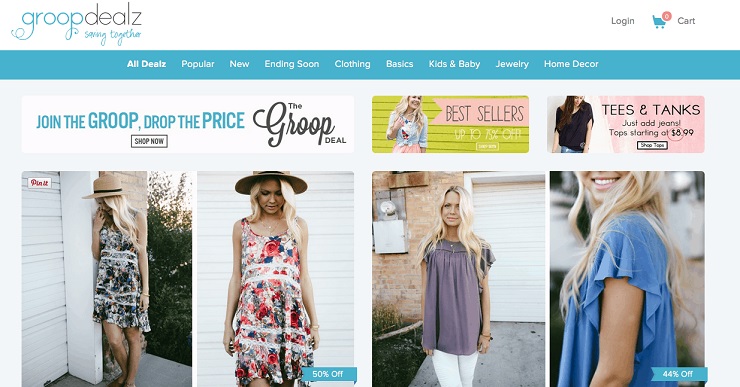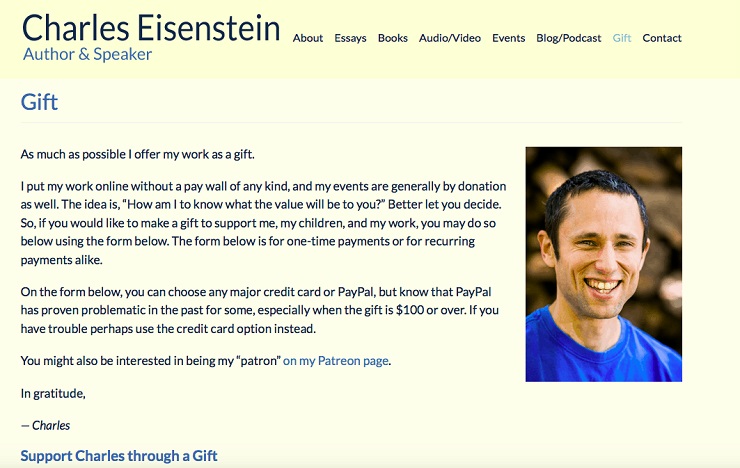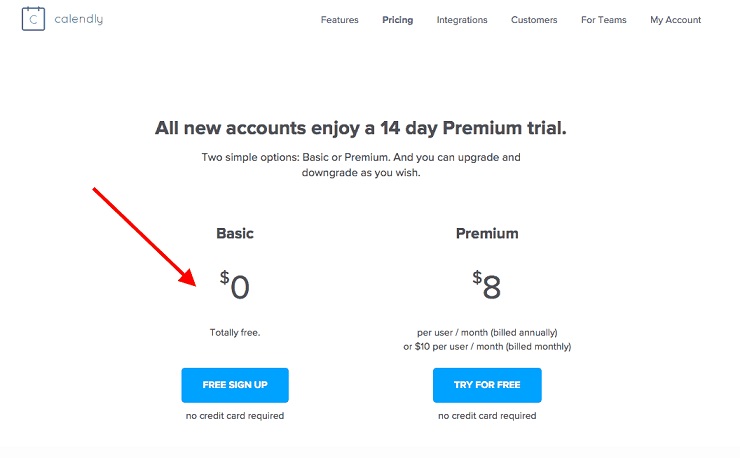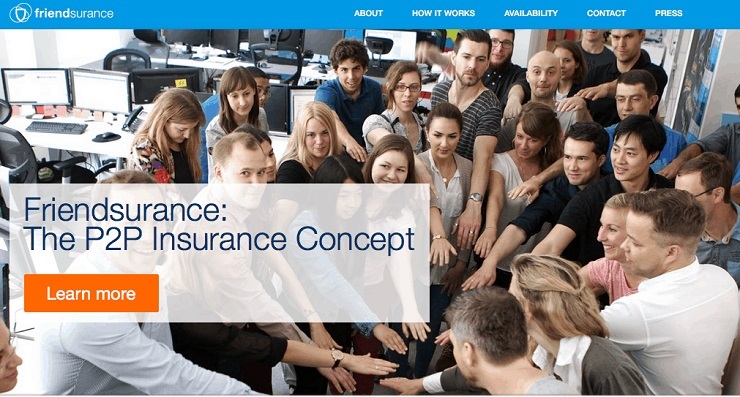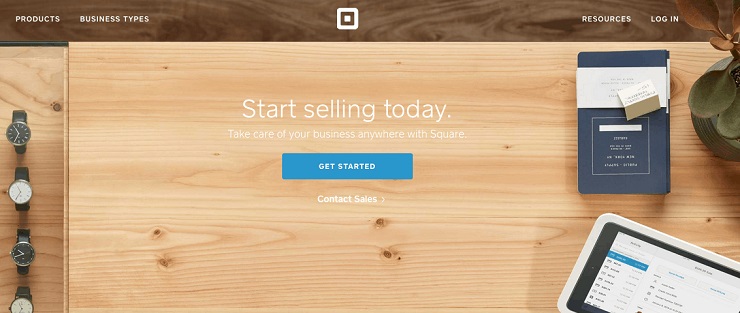Ever wondered how your favorite comedy website makes money?
How about that free file-sharing program you use everyday?
And what about that RPG that you’re spending all of your free time playing (and some of your not-so-free time)?
Some businesses make their money in obvious ways—put a product on a shelf, person buys it, get money—but many others generate revenue in more mysterious ways. With the ubiquity of purely online, “free” businesses, and the price of information falling to zero or close to it, the strategies companies use to keep the lights on, much less pay server costs and employee wages, aren’t always so straightforward.
Although the internet has certainly opened new and exciting doors into entrepreneurship for many of us, it has at once vastly cheapened information and raised competition. Many online businesses selling media, information, or software are faced with having to compete with something previously unthinkable: people and companies giving away things for free.
As a result, a slew of creative business models have come into being. These businesses models have allowed service, information, and media-based businesses to carve out places in the competitive online landscape. People have taken notice – in fact, this article was inspired by this list crowdsourced on GitHub, which in turn was inspired by a list on Y Combinator.
So why should you, as an entrepreneur, care?
Exploring these available business models will allow you to better understand how to make money from your business or business idea. If you’ve attracted a great base of people to your product or service, but still are trying to figure out how to monetize it all, this article is for you. Even if you have some idea of how you might build revenue, considering the range of possibilities might make you think twice.
Even if you’ve yet to start a business, and are still searching for good ideas, this article is also for you. Starting out with an ideal business model in mind before settling on an idea will greatly help you make the right decision before investing resources, and allow you to sketch out important aspects of your business, such as strategy and marketing techniques. Certain industries just don’t align that well with certain models.
Finally, for anyone simply interested in the state of modern business, this article is a fascinating (if I do say so myself) look into the creative approaches fueling today’s successful startups. In this digital age, the business world has become a lush ecosystem of diverse approaches, people, and products, limited only by imagination and the public’s wants and needs. Take a tour of the many colorful ways that you can monetize your project or business.
Types of Web Business Models
- Advertising
- Commerce Business Models
- Subscription Business Models
- P2P (Peer to Peer)
- Open Source
- Cooperative Business Models
- Data
- Transaction Processing
- Conclusion
Advertising
Ah advertising, the classic money-making technique, integral to the continuing functioning and growth of capitalist economies. Advertising has and continues to be huge business, accounting for $111.14 billion dollars of revenue at the US alone. Advertising isn’t going away anytime soon, and it might be that you can grab a piece of that huge pie if your business attracts a large number of eyes and/or ears.
Businesses that have enough attention paid to them to monetize through advertising include any and all types of media, such as newspapers, radio, blogs, and television. But there are new opportunities, as more people are spending their hours staring at search engines, online classifieds, job listing services, and email.
The problem is that these days, ad-supported media business models all depend on scale, because rates are dropping lower every day. As a result, success in online media generally requires near-constant posting with broad or diversified appeal to build up a sufficiently big audience. It’s generally a tough game to play, and it’s getting tougher all the time. Increasingly, media companies are using ad revenue as just one component of a multifaceted model.
However, if it is a fit for your work, check out how you can make money using advertising below:
Display Ads
Display ads, a business favorite. Display ads include banners, pop-ups and other types of visual content that attract consumer attention to inform and influence them to a make a purchase. The basic premise is that your business gets paid by advertisers and/or businesses to get in front of all of the eyeballs you’ve been able to attract. This model is threatened by the advent of ad-blocking technologies as well as consumer desensitization. Nonetheless, the biggest names on the internet use them, so why not you?
Examples of a few businesses that monetize partially or fully from display ads:
• Yahoo!
• Billboards (the ones you see along highways, for example)
Search Ads
Search ads are similar to display ads, except that advertisements are displayed according the search queries entered by users. This theoretically allows for more targeted and effective advertisements, although for some keywords (as for “Foundr” below because we haven’t paid for search ads over at DuckDuckGo), they may fail.
Search advertisements are effective because they present ads that are directly relevant to what a consumer is searching for. They are less intrusive and can sometimes be more relevant than unpaid search results. Often, search ads will be built on a pay per click (PPC) model, where the advertiser pays a fee for every clickthrough on the ad that occurs.
One downfall is that this revenue model has to compete against always clever Search Engine Optimization (SEO). Another downfall is that you can’t really make this revenue model work for you unless you are a well-known search engine or comparable conduit of searchable information.
Examples:
• Google, the undisputed master of search advertising
• Twitter Ads
Video ads
Video ads are ideal if you are running a video media company. They integrate perfectly within the content.
Examples:
• Hulu
Audio Ads
Audio ads can be an informative voiced announcement, or that cereal jingle you haven’t been able to get out of your head since childhood. You can typically monetize through audio ads if you are delivering some kind of auditory product, such as music or recorded interviews.
Examples:
• Podcasts (Entrepreneur on Fire uses audio ads and brings in over 5 figures a month!)
• Pandora
Promoted Content
Promoted content isn’t as advertise-y as ads, and that’s just what makes them effective. If you are looking to make money from promoted content, you’ll need to run some kind of platform where your users are sharing and reading lots of internet content. This will incentivize companies to pay you to promote their native content (it looks a lot like the rest of the stuff you publish) to give them a leg up in the game.
Downside: you can’t really do this unless you’re a major social networking site
Examples:
• Tumblr
Recruitment Ads
Recruitment ads are paid for by employers looking to draw attention to their job postings. There are few things more expensive for employers than making a bad hire. That’s why it’s very much in their best interests to place ads on places where the right people search for jobs to attract a higher volume of applicants.
This ad option is best if you run a site geared toward work or specific careers, toward a specialized skill, or if you own a site dedicated to recruitment and job searching.
Examples:
• Indeed
Lead Generation
If you are serving a two-sided market, that is producers and consumers simultaneously, then lead generation may be advertising model made for you. Boiled down, you will be connecting a high-value lead to someone looking for business. In order for this to work, you need to attract a specific set of people who have a high probability of making a purchase.
Some good fits might be matching mortgage rate searchers with realtors, patients with doctors, plane ticket bookers with travel agents.
Examples:
• RateHub
• ZocDoc
Affiliate Fees
The ever-popular affiliate advertising is an arrangement where the advertiser (or you, the business) receives a cut of any purchases their audiences make. Many blogs and niche sites, and even service-based sites, make their income via affiliate income. This income can be significant. For example, Pat Flynn’s Smart Passive Income blog makes a significant portion of its monthly 5-figure income from affiliate commissions.
Many online entrepreneurs started out by trying to build a niche site around a popular, yet underserved keyword, and monetizing that site via affiliate fees (see “Knife Den” below, built around the keyword “Best Survival Knife”). As with the other advertising-based revenue models, the main challenge is generating a large enough volume of qualified traffic make a good income from affiliate commissions.
Examples:
Screenshot of Pat Flynn’s latest MONTHLY Income report
Commerce Business Models
If you are looking to go beyond advertising other people’s products, this section is for you. Commerce business models are for businesses looking to sell a product, whether that be a physical product or information product.
That means you need to do the marketing as well as the selling, which involves extra time and cost. However, the huge bonus is that you can collect up to 100% of the profits generated, unlike the advertising business models, where at most you’d achieve a 50% commission if you find a very generous affiliate partner.
Retailing
Retailing is the process of satisfying a demand through creating a supply chain, which at the end point awaits a hungry buyer. The value that retailers provide is sourcing quality products and ensuring that they are available at a convenient location and time. This can involve business-to-business transactions (B2B) or, more commonly, business-to-consumer transactions.
A traditional retail environment would be a mall, but now, retail is increasingly moving online to virtual storefronts and websites. In fact, one of the world’s top 10 largest retailers is none other than Amazon.com.
Retailing can be complex, especially when brought online. You will also need to compete in a very competitive retail field, forcing you to invest more money into advertising and marketing.
However, it’s a tested and proven model with many success stories to choose from.
Examples:
• Zappos
• Amazon
Marketplace
Would you like to get involved in commerce, but not so interested in details of a complex supply chain? A marketplace may be the business model for your commerce concept. Marketplaces offer a platform through which sellers and buyers can meet and exchange goods. As a marketplace, you typically make money by taking a certain percentage of the sale as your commission for offering and maintaining the platform. Marketplaces can be physical or virtual locations. Marketplaces differ from retailing in that you have multiple sellers offering up their goods, versus a single company selling a variety of products.
• Souks
• Etsy
A Middle-Eastern Souk
Excess-capacity marketplace
Excess-capacity marketplaces are a new type of marketplace quickly gaining prominence thanks to the interconnective power of technology. These marketplaces aggregate excess resources and allow owners to leverage their unused or underused stuff—such as space, time, vehicles, materials, even pets—and rent/sell them out for a profit.
Examples:
• AirBNB
• Uber
Vertically Integrated Commerce
Vertically integrated commerce is retail done directly. Clever commerce players have revolutionized their industries by vertically integrating the supply chain, bringing manufacturing, branding, and distribution under one roof. This eliminates middlemen and waste, and allows products to be presented directly, and directly tailored, to consumers.
This is a great option if you are looking to compete in retail, which, as mentioned, has become extremely competitive thanks to giants like Amazon. Vertically-integrated companies distinguish themselves through unique products, high quality, customization, and sharp branding. Customization is especially significant—vertically integrated commerce will aggressively zone into a particular niche and make sure their products are specifically made for this market. For example, Nasty Gal listed below targets retro chic younger women. They may also be able to compete on price since their costs are lower thanks to the simplification of the supply chain.
Examples:
Flash Sales
Yet another way to compete against giant retailers like Amazon is to build your commerce startup on flash sales. This involves having a continuous stream of temporary sales to entice consumers to buy from you NOW to enjoy steep discounts. The main effect of these flash sales is creating an ongoing sense of scarcity, which is a psychological selling trigger.
This is an extremely effective strategy, and some players, like Gilt, have built their businesses to $1 billion thanks to this tactic. You’ll often find this commerce business model applied to high-ticket items, like luxury goods and designer items.
Examples:
• Gilt
• Fab
Group Buying
Group buying involves offering products and services at significantly reduced prices and on the condition that a minimum number of buyers make a purchase. This model has grown especially popular for selling products and services at a local business level. These websites usually function as marketplaces, bypassing the retail supply chain:
• Groupon
Pay What You Want
This is a new and rising movement of businesses offering up their products and services on a flexible pricing basis. This is particularly great if you are a business serving a community of people who are passionate about what you sell, or if you are a personal brand with a devoted following. You can request a minimum amount to cover basic costs and allow people to give you more depending on their preferences. Some companies also defer payment to after the “purchase” has been made—that is, they follow-up with the buyer later asking for voluntary payment. This reduces a buyer’s perceived risk, allows them to assess the value of the product, and may result in greater overall revenue by decreasing the number of refunds.
Of course, you run the risk of having people pay you zero dollars, but this method is great for making you stand out among the competition, by demonstrating an impressive confidence in what you have to offer. It can also be helpful to new brands that have not yet built up enough authority to successfully demand market rates for their products or services.
This method also increases trust among buyers. “Pay what you want” eliminates the fear that they’re wasting money or getting swindled. It changes the dynamic of buyer/seller from a competitive to a more co-creative relationship.
This is a perfect model for independent artists, avoiding the hassle of having to “compete” against others in their field, which may make little sense if their work is unique and labor-intensive. This model has also gained popularity among those who have ideological issues with pricing their products according to market rates.
Examples:
• Charles Eisenstein (Author who gives his books away on a “pay what you want” basis)
• Headsets (you have the option of paying what you want for headsets)
• Radiohead did this as well!
• Musicians on Bandcamp
Subscription Business Models
Subscription businesses are a fan favorite among entrepreneurs, as they have recurring revenue baked right in. Subscription-based services started out mostly in the publishing industry, with magazines and newspapers, but now have invaded nearly every industry, from diapers to opera tickets.
This model builds brand loyalty and a dependable consumer base, which are two key ingredients to a viable business. The overall value of each customer also tends to be higher. Therefore, the model reduces overall risk and makes for easier forecasting.
Software as a Service (SaaS)
A SaaS business is a company that creates and maintains software in exchange for a typically monthly payment from customers. The software usually lives on the cloud, which saves clients money on server costs and in-house developers. SaaS businesses are typically easy to deploy and have huge potential for scalable growth. They can be created for a variety of sectors, with technologies often applied to streamlining communication or administration in other companies.
SaaS is a hot model right now, as Marc Andreessen puts it: “Software is eating the world.”
Nonetheless, entrepreneurs beware—SaaS is difficult, especially the customer acquisition and retention aspect.
Examples:
• Samcart
• Shopify
Freemium Subscription
Same premise, except that the service is free of charge up to a certain limit of use. This limit could be the amount of storage space, number of downloads, or number of users. This is used primarily as a marketing tactic, as it works to lower the barriers to entry for potential buyers. You’ll see that many subscription businesses, even those that do not follow a freemium model, will typically offer some sort of discount or offer for their entry into the service (see Samcart above).
• Slack
• Dropbox
• Calendly
Customer as a Service (CaaS)
This subscription model involves delivering content to an audience in exchange for a regular fee. This model started out in movie rental stores, and has since migrated to the online sphere. The distinguishing factor is that, rather than purchasing individual pieces of content, you pay a flat rate for all that’s available.
Examples:
• Netflix
• Audible
Infrastructure as a service (IaaS)
This subscription business model involves providing clients with access to computing infrastructure resources, such as server space, network connections, bandwidth, IP addresses, and load balancers. The provider maintains the physical elements and the client get access to these resources in order to build their own IT platforms.
Examples:
• Cloud66
Recurring Donations
You don’t have to be a charity in order to run a business based on donations. Many modern-day businesses rely fully or partially on donations in order to operate. These are usually “social good” type enterprises, and may incorporate other sources of income into their business model. It’s also an increasingly common practice among artists and other creatives who ask fans to chip in a regular amount to support their overall work.
Examples:
• Patreon
• Pixabay
Subscription Boxes
An increasingly popular business model that straddles retail, vertically-integrated commerce, and subscription business models. Subscription box companies deliver a good to clients on a regular basis. Clients pay a higher price for these goods in return for the convenience and predictability of the regular delivery. This model works best for items that need to be regularly replenished, such as cosmetics, diapers, and some food items.
Examples:
P2p (Peer to peer)
Not all companies have to be built on a provider-consumer relationship. Many businesses draw revenue by connecting peers to exchange goods and services. This is a budding field, where revenue for the business is typically made by drawing a processing fee or membership fee from participating peers.
P2P Lending
P2P lending businesses assist people in circumventing the bank and payday loan institutions to get money. This business model enables people to provide loans, typically at a lower interest rate or on easier terms than with a bank. As this business model removes the middleman (the bank) from the transaction, lenders will typically earn a higher net return or interest rate. The challenge to lenders is that these loans are typically unsecured, making the risk higher. There is also the trust element on both sides that needs to be managed, which has been done so in a variety of creative ways by different players in the P2P lending industry.
Examples:
• Prosper
P2P Insurance
P2P Insurance removes or reduces insurance companies as the intermediary, and allows people to come together and crowdsource their own insurance. These businesses can be structured in a variety of ways. For example, a small group of friends and family may come together and place an equal sum into a pot. This pot can be used to pay down the deductible when insurance is needed, thereby making insurance cheaper for everyone. There are also models that crowdfund business insurance, car insurance, and nearly any kind of insurance imaginable.
Examples:
• MetroMile (Pay-Per-Mile Auto Insurance)
P2P Computing
Typically for volunteer based projects, P2P computing involves having a set of people share their server space/bandwidth or other computing resources. This may or may not involve illegal downloading of media and other content. 😛
• BitTorrent (P2P file sharing)
• SETI@home (volunteering your computing resources for space research)
P2P Funding
Crowdfunding is huge for entrepreneurs right now, and a whole slew of sites have helped build well-known businesses. P2P Funding cuts out the venture capitalist, bank, or government loan so that people can gather the required capital to start a business faster.
Examples:
• GoFundMe
Licensing
Entrepreneurs can create profit either by licensing a product that they own, or purchasing a license from an established company. Typically, you’d need to have an established company in order to sell licenses. Conversely, as a new entrepreneur, you may be interested in tapping into an already-established company’s brand, infrastructure, and marketing systems and make a percentage from the sales. Your job will involve properly marketing and selling the product to fully leverage this established value.
Examples of companies that make most or much of their revenue from licensing their brand:
• Qliktech
Open Source
Open Source is no longer just for free software anymore. Large businesses have been leveraging open source products in a variety of ways. The advantage of this business model is reduced development costs, access to a wider market and the currently popularity of open source (since it’s mostly free).
Consulting
Many service-based businesses have been created around providing consulting for companies that are built on open source software.
Examples:
• Red Hat
• Nginx
• Revsys
Hosting/Infrastructure
Open source hosting companies are all the rage, with the most popular hosting website for blogs currently being the open source WordPress. WordPress has monetized by offering a premium features to those who pay, charging for domains and a variety of other web-based services. The core of its functionality is free, however.
Examples:
Advertisement
Leverage your open source software by placing ads and reaping ad revenue.
Cooperative Business Models
The majority of businesses that we recognize are top-down, hierarchical enterprises out to beat other players in their fields. The reason these businesses are most common is because they are favored by capitalism, which requires quick growth and competitiveness for success.
However, some businesses have carved out pieces of the market in nearly every industry, using a radically different model of business: the cooperative model.
The main two differences between typical top-down enterprises and cooperatives is that the business is not owned by a few private hands, and that ownership of the business cannot occur outside those working or consuming directly from the business. This means that you cannot purchase stock or become a shareholder in a cooperative business unless you work there or you are one of the consumer-members.
One main advantage is that these businesses are extremely democratic in nature. Since all members own a share in the business, they have a real voice into the operations and decisions of that business. For examples, members of a workers’ cooperative would collectively make hiring/firing decisions for the company, instead of a small group of managers, or only the business owners.
Another bonus is that the goal of the company is to maximize net and real worth of all owners, instead of only increasing profit for the business owner or shareholders.
In cooperative models, every owner of the cooperative gets an equal vote, regardless of the amount of shares they own of the company. Therefore, say in the company is not contingent on how much money you have.
If you are starting a business with a few people and are struggling to figure out how to divide equity, a cooperative model may be just what you’re looking for.
Worker Cooperatives
Worker cooperatives are companies where all owners are also workers in the company. This means that the workers must also self-organize to manage the company, or at least elect those among them who will do this task. As worker-owners, each member of the cooperative also gets an equitable share of the yearly surplus profit, as well as having voting rights as to how the profit is otherwise allocated.
As the cooperative grows, it may invite more worker-owners in a variety of ways. For example, after working as an employee with the cooperative for a duration of time, a person may be invited to buy into the company and become a worker-owner. As a rule, cooperatives need to be open to inviting new worker-owners if an employee is qualified.
As outside shareholders cannot own stake in the company, all profit remains within the cooperative, which can lead to higher wages for the worker-owners. A downside is that investment from outside loans cannot be received.
Participating in a worker cooperative means that you are both an employee and a business owner. This comes with more responsibility and requires development of a new set of skills, while at the same time granting you more autonomy and agency.
This model has been extremely successful in a variety of industries, as the example below illustrate:
• Mondragon Corporation (+70 000 worker-owners)
• Colab (web design cooperative)
Consumer Cooperatives
These cooperatives are owned by consumers instead of workers (although the two models may often be combined). Consumer cooperatives typically occur when a need in a community is identified that a privately owned enterprise cannot provide because of lack of profitability. Alternatively, they may be formed in order to provide an essential need at a lowered cost. For example, food cooperatives may be formed to provide groceries at a lower cost.
To take the food cooperative example, a city may come together and pool money in order to open one. They will often pay a yearly or monthly membership. This membership means that each member of the community owns a share and an equal vote in the cooperative. The money is used to fulfill startup costs and maintenance costs. The cooperative company will seek to fulfill the needs and wants of its owners, which in this case are the consumer-owners. In this example, the community was seeking lowered food cost. As such, all operations and profit of the company will be targeted towards that end.
Consumer cooperatives also appear in consumer good industries.
This likely isn’t the best model to follow if you are looking to create a company to make you rich. However, if you’re interested in creating a company to fulfill a local need or want, this is an excellent model to explore.
Examples:
• Mountain Equipment Coop (MEC)
• The Wine Society (Australian Wine Consumers’ Co-operative Society Limited)
• Credit Unions
Data
Knowledge is power, and profit, for companies that sell and buy data as their business model. Businesses that sell data will typically do all of the hard work of collecting, digitizing, analyzing, and presenting data to enable others to make better, and more data-driven decisions.
User Data
This model involves collecting data from consumers and sell it to businesses so that they can better their strategy, marketing, and sales.
Examples:
• Krux
• Lotame
Business Data
Same thing as user data, except you are collecting information on business to enable clients to perform between B2B transactions.
• Duedil
Transaction processing
Lots of huge businesses are built not on selling a “thing.” Instead, they facilitate a transaction. As murky as that sounds, these businesses play a central role in today’s marketplaces, and many of them are household names.
Merchant Acquiring
Do you take Mastercard? Visa? American Express? And where’s my receipt?!
With so many payment options out there today, consumers and sellers need companies that make it easy and fast to interact and transfer payment.
This is where merchant acquiring companies come in. They create a platform that takes care of all of those technical and pesky details involved in dealing with the modern world of digital money. In exchange, these merchant acquirers are awarded either a flat rate or a commission.
Examples:
• PayPal
• Stripe
• Square
Online Business Models
The business model you pursue is almost as important as your idea. Actually, scratch that, it’s much more important than your idea. Remember that saying, it’s 10% idea and 90% execution? A big part of that execution is your business model.
It will help determine the direction you take in terms of your marketing, hiring, strategy and much more. But what do you think? Did we miss a business model? Are you pursuing an interesting combination above? Let us know in the comments.


